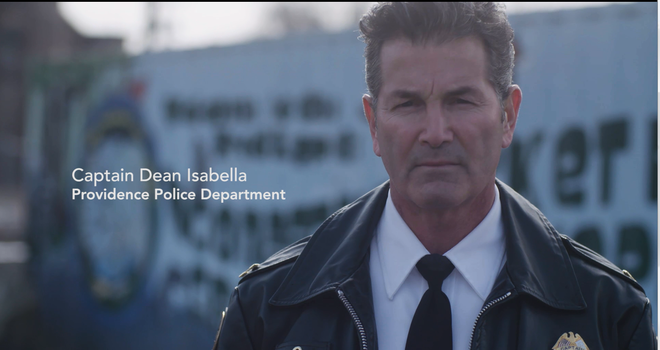In the third installment of our #SafetyPartners blog series, criminologist Sean Varano describes the value of problem-oriented policing, and what a researcher can bring to the quest for safer neighborhoods.
LISC works to reduce crime in low-income places by helping forge partnerships between police, community developers and researchers. When these entities, in collaboration with residents, pool their information, strategy and talent, neighborhoods begin to experience real drops in crime. Over the coming weeks, we will feature blogs from a community developer, a police officer and a researcher, each part of comprehensive safety efforts in the Olneyville neighborhood of Providence. What follows are their reflections on the challenges they face, and the solutions they see making a difference in their community.
As a criminologist and researcher, I have spent more than 20 years investigating how problem-oriented policing—or problem solving, as it is also known—can upend seemingly intractable problems of crime and disorder, and make communities safer, more vital places to be. Problem solving is an approach that gets at the causes of crime and tackles them at their roots. It has challenged police and other members of the criminal justice system to rethink crime control strategies. Eventually, it could transform the entire policing enterprise in our country.
Everything I have observed in my academic life, while working with the Community Oriented Policing Services (COPS) at the Department of Justice, and in my partnership with the Byrne Criminal Justice Initiative Program (BCJI) in Providence, supports that possibility. But by definition, problem solving must be thoroughly integrated into policing in order to work. I’m not convinced that walking beats, or police on bikes, or having police attend community meetings are sufficient commitment to community policing. Something deeper is needed. I am committed to the notion that problem solving is a core component of all effective community policing efforts, not a sideline.
I first saw this notion in action in the 1990s, when I worked with communities throughout Michigan, attempting to implement innovative strategies to prevent juvenile offenders from developing into serious, chronic offenders. It was clear, from the vantage of problem solving, that police need not wait for serious offending to emerge before they take action. Instead, they can intervene in problem behavior at or near its onset in order to prevent escalation.
Ideas like these challenged law enforcement agencies in Michigan to recognize the limits of traditional police responses as well as the importance of longer-term solutions. Police began to give real thought to the fact that they had a role in preventing violent crime.
A solid working relationship with community members is imperative for police to problem solve successfully. Building those kinds of partnerships, of course, is a goal of BCJI. At the outset, the BCJI project in Providence focused on serious and violent crime in certain neighborhoods. But meetings with residents early in the process made it clear that they were more concerned with quality of life problems. Prostitution, flagrant disregard for traffic laws and widespread parking problems created a deep sense of disorder and lawlessness and posed daily challenges that kept people from fully participating in their community. Residents also identified locations, locally known as “cuts,” which were well-known hotspots of problem behavior. They knew about the back alleys, overgrown lots and similar places where crime took place and they wanted to do something about them.
In my capacity as researcher with the BCJI team, I listened and recorded this information, and helped disseminate it among the partners. The Providence Police Department took the residents’ concerns seriously and adjusted their strategies to take on these immediate problems. They worked with a local service provider, for example, to partner police officers and social workers to more effectively address the prostitution problem. Instead of merely arresting prostitutes, these teams regularly go on patrol together, identify prostitutes and help them access services and recovery programs. Officers have also collaborated with other teams to identify “cuts” or hotspots and implement design strategies that dissuade the factors driving crime there.
Another case in point: In the past year or more, the City of Providence has struggled with growing problems related to the homeless population, such as aggressive panhandling and vagrancy. These issues have emerged as a significant political problem in the city, and there is a groundswell of interest in devising long-term strategies for addressing the problem. The department has been part of a growing chorus of voices making it clear that arrest-based strategies are not a sustainable solution.
Although it has been a slow process, the larger law enforcement community has continued to internalize the idea that prevention lies at the heart of policing. That is, prevention is more than a political platitude or some obscure goal, but a strategy that can lead to tangible policy to make communities better places to live and work.
Related:

Captain Dean Isabella of the Providence PD describes the transformation of a Rhode Island neighborhood.
 ABOUT THE AUTHOR
ABOUT THE AUTHOR
Sean Varano, Associate Professor at Roger Williams University
Sean is an associate professor in the School of Justice Studies at Roger Williams University in Bristol, RI. His areas of expertise are law enforcement policy and practice, innovative approaches to violence reduction, youth gangs, and evaluation research. Varano is an active collaborator with local communities implementing and evaluating evidence-based approaches to crime and public health.
More from our #SafetyPartners series:
Navigating a Passage Between a Rock and a Hard Place
by Tina Shepard
The What, Why and How of Community Policing: An Officer’s View
by Officer Tracie Miller